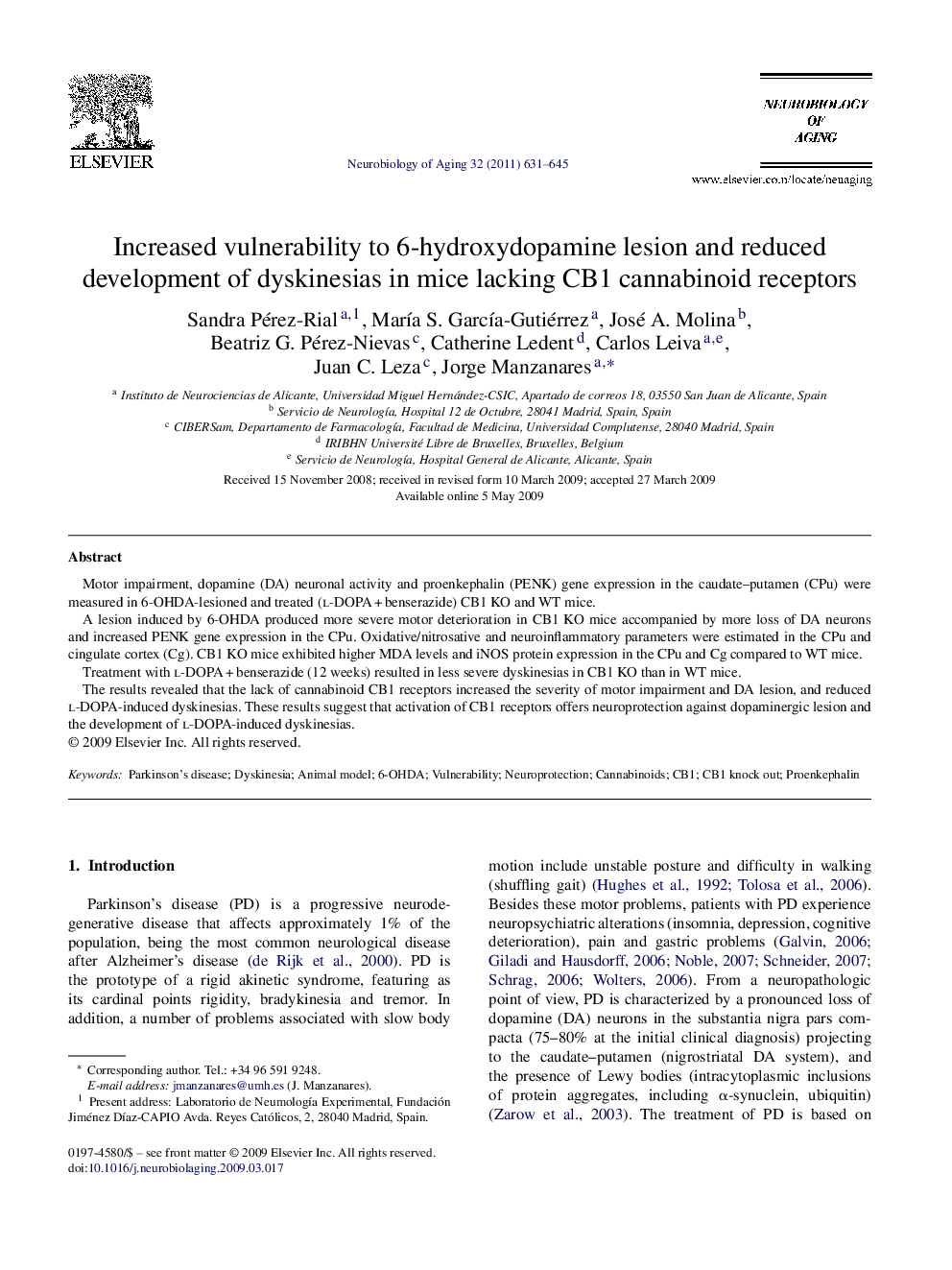| کد مقاله | کد نشریه | سال انتشار | مقاله انگلیسی | نسخه تمام متن |
|---|---|---|---|---|
| 330953 | 1433609 | 2011 | 15 صفحه PDF | دانلود رایگان |

Motor impairment, dopamine (DA) neuronal activity and proenkephalin (PENK) gene expression in the caudate–putamen (CPu) were measured in 6-OHDA-lesioned and treated (l-DOPA + benserazide) CB1 KO and WT mice.A lesion induced by 6-OHDA produced more severe motor deterioration in CB1 KO mice accompanied by more loss of DA neurons and increased PENK gene expression in the CPu. Oxidative/nitrosative and neuroinflammatory parameters were estimated in the CPu and cingulate cortex (Cg). CB1 KO mice exhibited higher MDA levels and iNOS protein expression in the CPu and Cg compared to WT mice.Treatment with l-DOPA + benserazide (12 weeks) resulted in less severe dyskinesias in CB1 KO than in WT mice.The results revealed that the lack of cannabinoid CB1 receptors increased the severity of motor impairment and DA lesion, and reduced l-DOPA-induced dyskinesias. These results suggest that activation of CB1 receptors offers neuroprotection against dopaminergic lesion and the development of l-DOPA-induced dyskinesias.
Journal: Neurobiology of Aging - Volume 32, Issue 4, April 2011, Pages 631–645